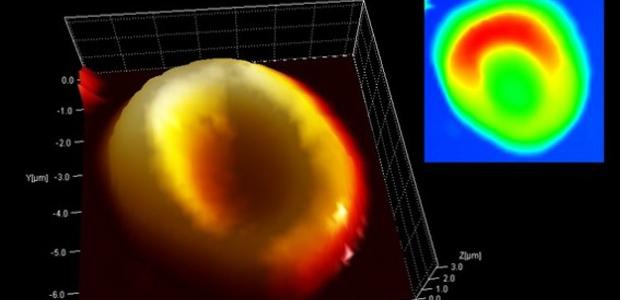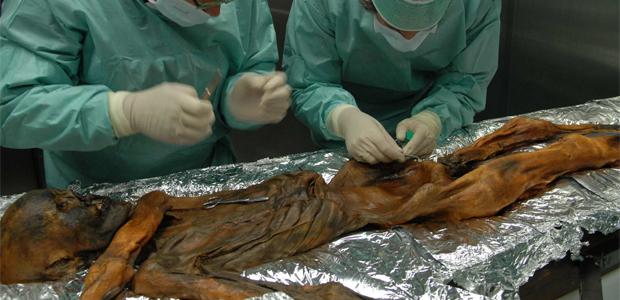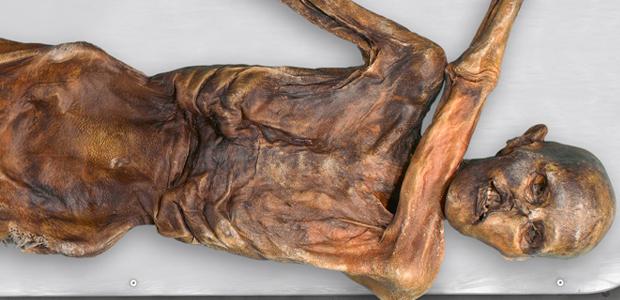Using cool laser technology, researchers have actually recovered individual red blood cells from the Tyrolean Iceman – the oldest red blood cells ever recovered!
First we learned that Ӧtzi – the 5,300 year old mummified-man from Italy – was blood type O and expressed Rh-positive antigens.
Now, using cool laser technology, researchers have actually recovered individual red blood cells from the Tyrolean Iceman – the oldest red blood cells ever recovered!
“We’ve been looking for blood in the Iceman for the last 20 years and nobody’s ever been able to detect it,” Albert Zink, study co-author and head of the Institute for Mummies and the Iceman in Bolzano, Italy told Science-Fare.com. “It gives us hope that maybe there’s more to analyze about his blood.”
The researchers examined samples of tissue from the wounds on his hand and shoulder – including the spot where the arrow head was lodged – and scanned them in order to obtain the high resolution images using a technique called atomic force microscopy.
It’s cool because it doesn’t image the cell directly, but feels it and then creates the image.
“We can say the red blood cells are identical to modern day samples,” Zink said. With a classic donut shape, the researchers say, Ӧtzi was healthy and didn’t suffer from any blood disorders that result from changes in cell shape – like sickle cell anemia.
In order to confirm they hadn’t just found the imprint of a blood cell – or some other contaminant, like pollen – the researchers analyzed the sample’s chemical signature. Best of all, they did it with lasers!
The technique’s interesting. Like a puzzle, each red blood cell is made of pieces – each of which, react to the laser uniquely – It generates a unique Raman Spectra that researchers can compare to ones they create in the lab.
When they compared the Raman Spectra generated by Ӧtzi’s sample to a sample researchers know to be red blood cells – the control – they matched!
But, since they were more than 5,000 years old, the quantity had substantially decreased – they breakdown really quickly, so new ones can replace them.
The researchers also found a unique signature in his shoulder wound – the one they believe killed him – matching one they know to be fibrin.
Fibrin is released soon after a wound has occurred and also disappears quickly – it’s like the temporary bandage that forms before the actual wound repair starts. Its presence suggests Ӧtzi died very shortly after receiving the wound.
“He really must have died quite quickly after he was shot by the arrow,” Zink said. “We’re talking a few minutes and he certainly didn’t survive it for more than half an hour.”
The signature was clear, but the quantity was fleeting – because it degrades so quickly, they weren’t able to see it like they could the red blood cells.
Ӧtzi’s been a gift to researchers since he was discovered in 1991. 5,000 years ago, Europe was preparing to go through a massive change due to the spread of agriculture – among other things – and he represents a life before the one we know now.
The fact his blood cells were identical to modern day ones is important because, in a lot of ways, humans have changed since Ӧtzi – the majority of the population 5,000 years ago, including Ӧtzi, were lactose intolerant. Today, the reverse is true.
The laser technology has other cool applications too. Since researchers were able to visualize some of the characteristics associated with the red blood cells, forensic units can create tests to determine how old, for example, a dried blood spot is – something current technology doesn’t allow them to do.
“With this method we can measure the properties of the bloodspot,” Zink said. “We can see whether they get more stiff or soft and this could help to determine the age of a bloodspot.”
The research was published in the Journal of the Royal Society Interface.
Read more about Ӧtzi here
 Science Fare Media Science News – Upgraded
Science Fare Media Science News – Upgraded





